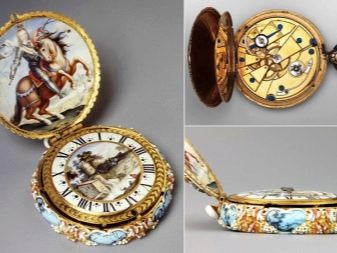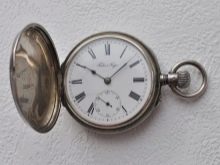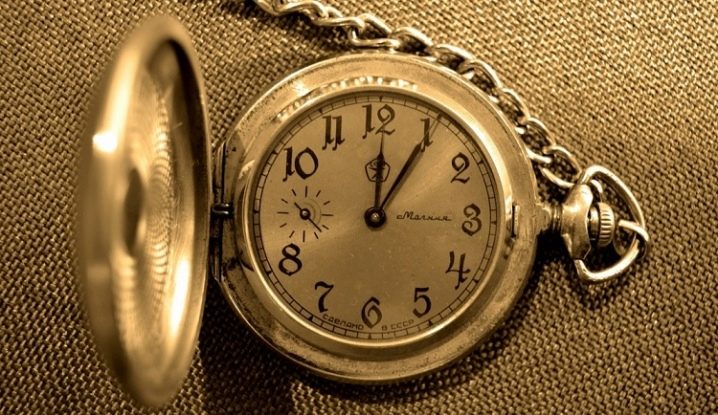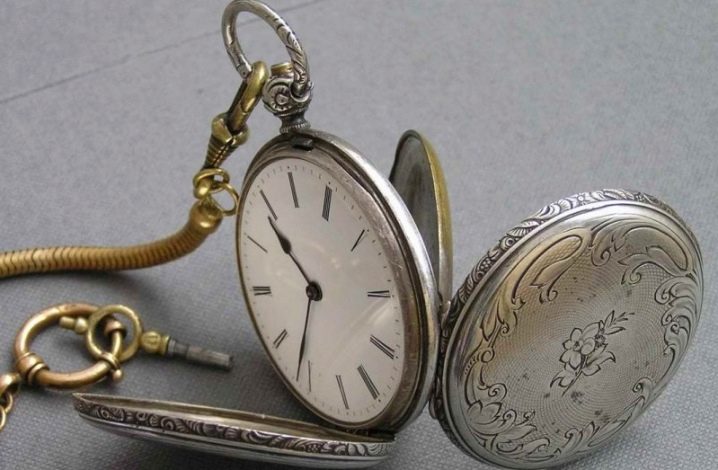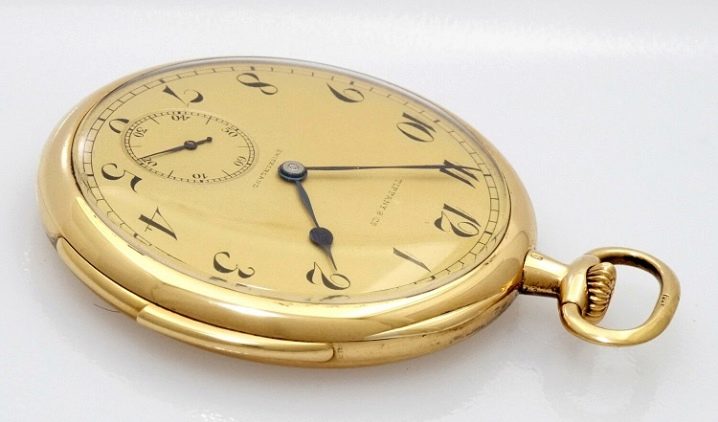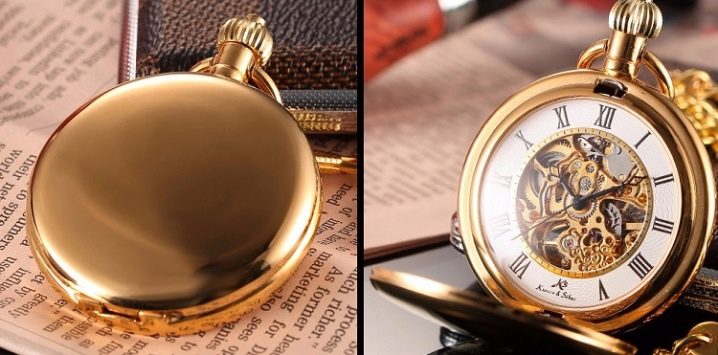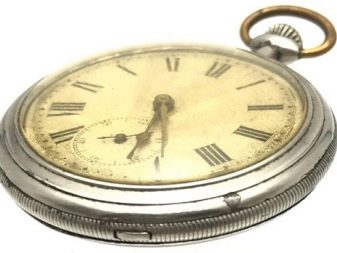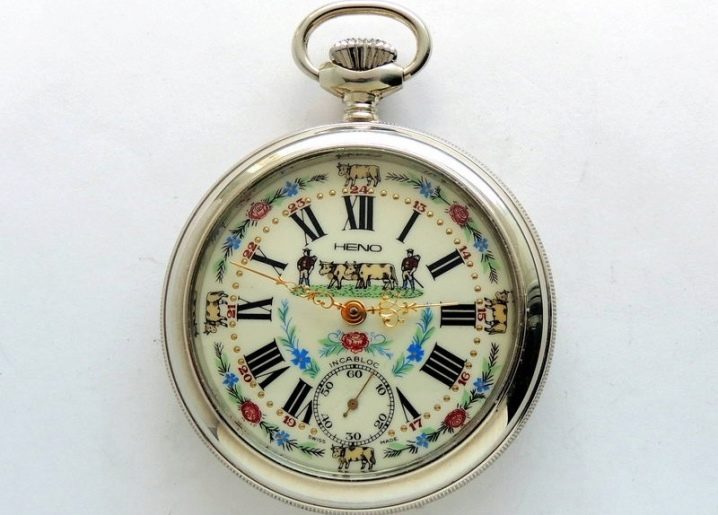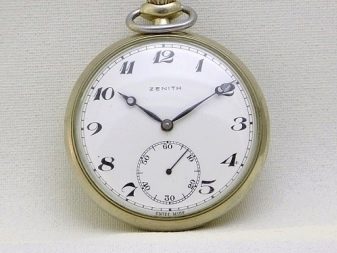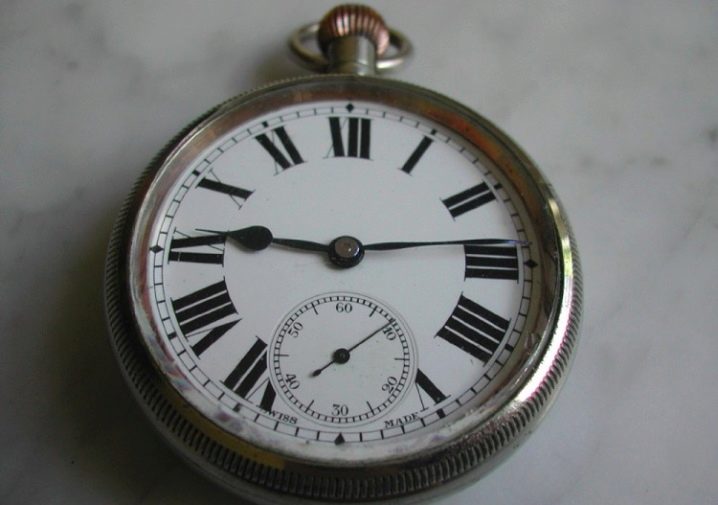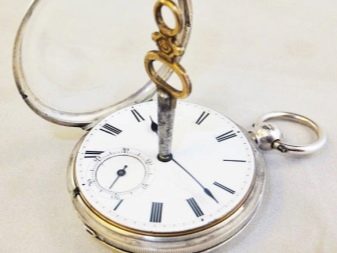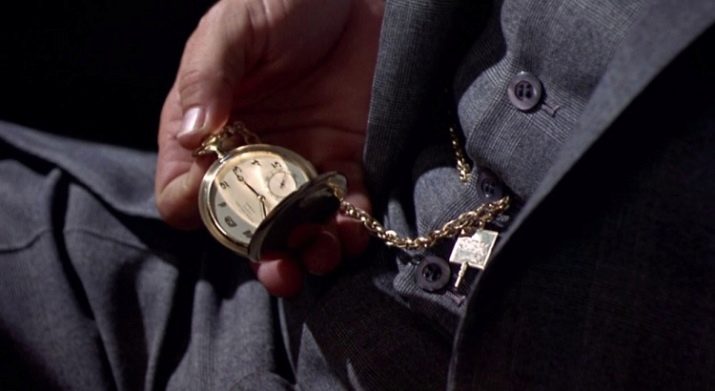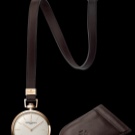Pocket watches: what are they and how to wear them?
Collectible pocket watches are not only a tribute to fashion, but also an excellent accessory that will serve the owner faithfully for many years. However, pocket instruments are now considered more of a piece of art than a tool for determining the exact time.
In the modern world, it is almost impossible to find a person with a pocket watch dressed in casual clothes. But despite this, pocket watches still have a place in the hearts of most collectors.
History
The first pocket watch appeared in the 17th century, with the invention of a mechanism of a suitable size. Instead of glass, they were closed with a brass lid, which protected the arrows, which could be rearranged with your fingers. Glass has been used since about 1609. In 1675 in England, King Charles II introduced clothing such as vests with pockets that were ideal for most pocket watches of the period. Until then, watches were not carried in their pockets.
With the advent of pocket watches, until the middle of the 18th century, they were not considered a luxury item. The American watch companies produced excellent pocket-size watches in large quantities. Only a hand-made Swiss pocket watch was expensive. In general, pocket watches were supposed to provide people with lower incomes.
Most of these inexpensive watches were intended for sailors, therefore, the case was decorated with scenes of naval themes and ships.
In 1860, the American watch company Waltham introduced pocket models with the marking "57". For them, replaceable parts were assumed, which reduced the cost of manufacturing pocket devices. Technical innovations at Waltham's production have made it possible to make more than 50,000 copies per year, surpassing other manufacturers of similar products.
At the same time, the quality remained excellent: the instruments showed the time with precision, while remaining practical and excellent in appearance. These figures have made Waltham a flagship manufacturer of inexpensive high quality watches. Of course, their design was inferior to Swiss counterparts such as Breguet, but in terms of accuracy they were unmatched.
Pocket watches did not lose their popularity until the First World War. After that, the soldiers used trench models that were more convenient in war. In the Russian Empire, the most famous watchmaker was Pavel (Paul) Karlovich Bure and his son, who later transferred production to Switzerland. After Bure's death, watchmaking passed to his Swiss associates, since Paul did not acquire heirs.
The greatest demand among collectors for the following old pocket models from the company "Pavel Bure":
- "Supplier of the Yard", issue of 1910;
- rare model from 1912 with an unusual dial;
- model with cupronickel case, 1917 release.
Pocket watches were also a fashionable device in the period of the USSR. The Lightning model is still considered a valuable and expensive rarity found in private collections or in museums. Let us explain what caused the demand for the old "Lightning" in the XXI century on the territory of all the former USSR countries and abroad.
In 1929, Stalin ordered the purchase of Dubert Hampton and the construction of a watch factory in the Urals, which was named Molniya. The enterprise worked in Zlatoust for the benefit of the army and aviation. During the Great Patriotic War, the plant settled in Chelyabinsk, where it continues to work to this day. In the USSR, only party leaders, military personnel or scientists could afford to buy such watches. Ordinary Soviet citizens could not afford it.In Soviet times, the Molniya watch was awarded to heroes, while the design of the premium watch device corresponded to each feat.
The company managed to survive in the 80s the competition of quartz movements and the collapse of the country. More than three dozen countries bought the products of Molniya OJSC, and an individual design was created for each of them.
Species overview
Pocket watches differ in mechanisms, design and construction. In addition to modern electronic devices with music, if desired, placed in a strap, there are rare collectible male models: quartz, with a beat and melody, gold with jewelry with precious stones, enamel.
Clock mechanisms.
- The key plant is "Key-wind, key-set". Most pocket watches of the early period were started with a special key included in the package. It was inserted into a hole in the back cover of the device.
- The winding shaft is "Stem-wind, stem-set". The watch appeared in 1850 thanks to the watchmaker Patek Philippe. The owner could start them without a key by turning the crown located on the case.
- The winding shaft with blocking - "Stem-wind, lever-set". The standard arrangement of all railway clocks after 1908. The owner had to open the glass and move the lever located on the dial to the time setting (winding) position. If the lever was set to the winding mode, the watch mechanism would wind up, and it was not possible to bring down the time.
Hunter case
Mechanical watch under a metal cover, opened by pressing a special button. The spring-operated watch was practical and protected from damage and dirt.
Open faced
An economical option without a protective cap and chain, introduced in 1876.
Lanco
Offers collectors a unique triangular-shaped piece, made in a gold-plated case, which is made using two plates.
Demi-hunter
The model is distinguished by the presence of a window, sometimes protected by another glass. This design is convenient for the owner to view the time without having to open the device lid. It is noteworthy that the first striking pocket watch was manufactured in 1775 by the Breguet company, owned by the talented mechanic Abraham-Louis Breguet. He managed to put miniature bells in the clock, on which tiny hammers were struck at a certain time.
Antique clock "Omega"
A watch with a 150-year history, which began thanks to the enterprising Louis Brandton, who turned 23 in 1842. Louis collected watches from parts purchased from local artisans. The products were in great demand and provided the owner with a comfortable life.
After the death of Louis, the business passed to his sons, who converted their father's workshop into a small production. Mechanisms and spare parts Louis-Paul and Cesar Brandton produced independently. In 1884, the first caliber was produced, named after the letter "Omega" from the Greek alphabet. Therefore, products are now called that way. After that, the company, formerly called Louis Brandt & Fills, was also renamed.
In 1909, the Omega Company became the Official Timekeeper of the Hot Air Balloon Race. And 23 years later, she was honored to perform in the same incarnation at the Olympic Games. In 1903, the brothers died, and their family business passed to four sons, who continued the dynasty.
The period from 1975 to 1980 turned out to be difficult times for the company. The crisis bankrupted Omega, and the Japanese company expressed its desire to become the new owners of the company. The deal did not materialize, the company was rescued by the banks that had pledged Omega.
Heno
A 1960 copy of the company of the same name, featuring a cow on a nickel and chrome case.
Zenith
Mechanical model Swiss-French made in 1950 with a case design typical of that time, made of chrome and steel and covered with gold plating. The case of the 1960 copy is made of silver.
A silver model with a lid, which depicts the image of St. Patrick, is a rarity.
Pattern 300
The 1940 military watch was made for the British Royal Navy, as evidenced by the corresponding markings on the case. These and other models of antique pocket-size watch movements are found at auctions today. Their value is influenced by the general condition of the antique. The price ranges from 300-1000 euros. Moreover, over time, the cost only grows.
Accessories
A pocket watch is a construction of several accessories designed to measure time. For ease of wearing, the case with the dial is attached to a chain. The kit often includes a special keychain to fix the accessory. It is designed to be attached to a pocket on a vest or trousers. Such a pocket is called a sentry pocket.
Interestingly, items such as vests appeared as a tribute to the fashion for pocket watches. Small watch pocket can be hidden or external and is located on the chest. The chain serves not only as a fastener and addition to the watch, but as a full-fledged accessory and even decoration.
Watches were often made to order from precious metals, with inscriptions, patterns and stones on the case. Such specimens were not cheap, and in modern times their cost can generally be considered prohibitive.
Remarkable is the fact that the mechanism of the old watch was wound with the key included in the kit. It was square in shape and worn on a chain. Therefore, having a pocket on your clothes was a necessity. Otherwise, the structure would simply have nowhere to locate. Special stands were also popular accessories for pocket watches. These were real works of art, on which the devices were proudly displayed in full view in the house. They are still highly regarded by collectors and antique dealers.
Earlier, only a select few could afford to purchase a miniature device for determining the time. Today, as before, the presence of a pocket watch is a sign of material wealth and high status, especially if the specimen is made of gold or silver.
How to wear a pocket watch?
The traditional way of wearing a pocket watch is by attaching it to a chain attached to the vest through a vertical loop. Most modern vests do not have such a loop. But you can also fasten the chain by passing it through the usual loop of the vest before buttoning it. In the old classical fashion, a pocket watch was worn in a vest pocket with a chain attached to a button. The watch was placed in a pocket so that the dial was turned towards the body. It is more convenient to know the time this way. Right-handers place the watch in the pocket on the right, left-handers - vice versa.
Another traditional way to wear a watch is to put it in your pants pocket. In this case, it is more convenient to use a short strap instead of a chain. It is better to choose a larger dial in order to clearly see what time it is. There were times when such a clock was a necessary device for workers in factories and factories. They were placed in the front pocket of the overalls. The chain was with large links, rough work.
It was customary to wear watches with an exquisite design on an original chain in theaters and at important official meetings, emphasizing their position in society. Modern fashionistas often attach watches not to a chain, but to their wrist, choosing bracelets. But true connoisseurs prefer the pocket version, which needs to be started with a key to work.
Most vintage pocket models are valued for their pedigree and history, which gives them a special flavor and aristocracy. Such watches were made with precision and craftsmanship, rare today, so that they could count off centuries without fail.
In the next video you will find an overview of the Molniya pocket watch.







